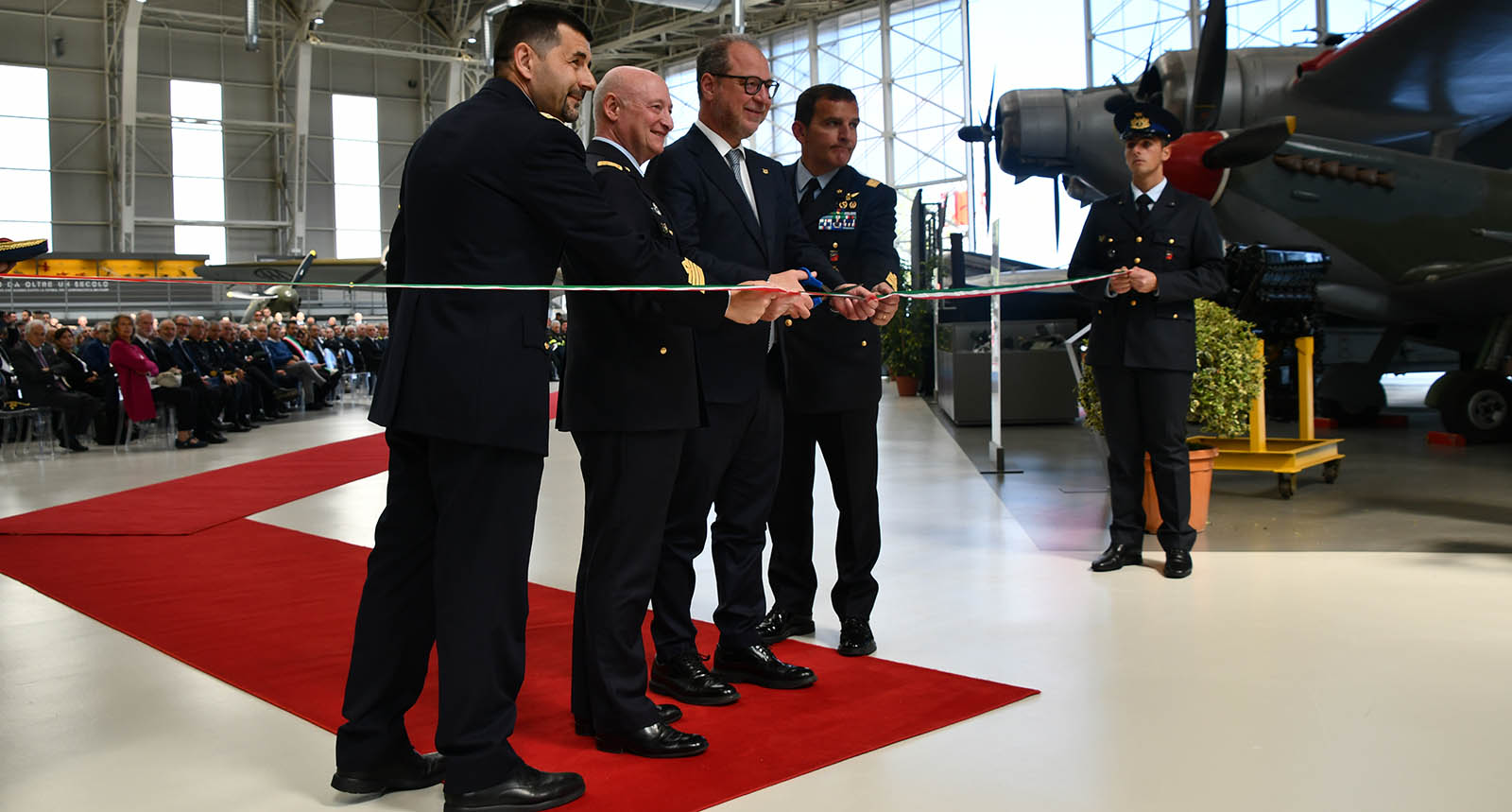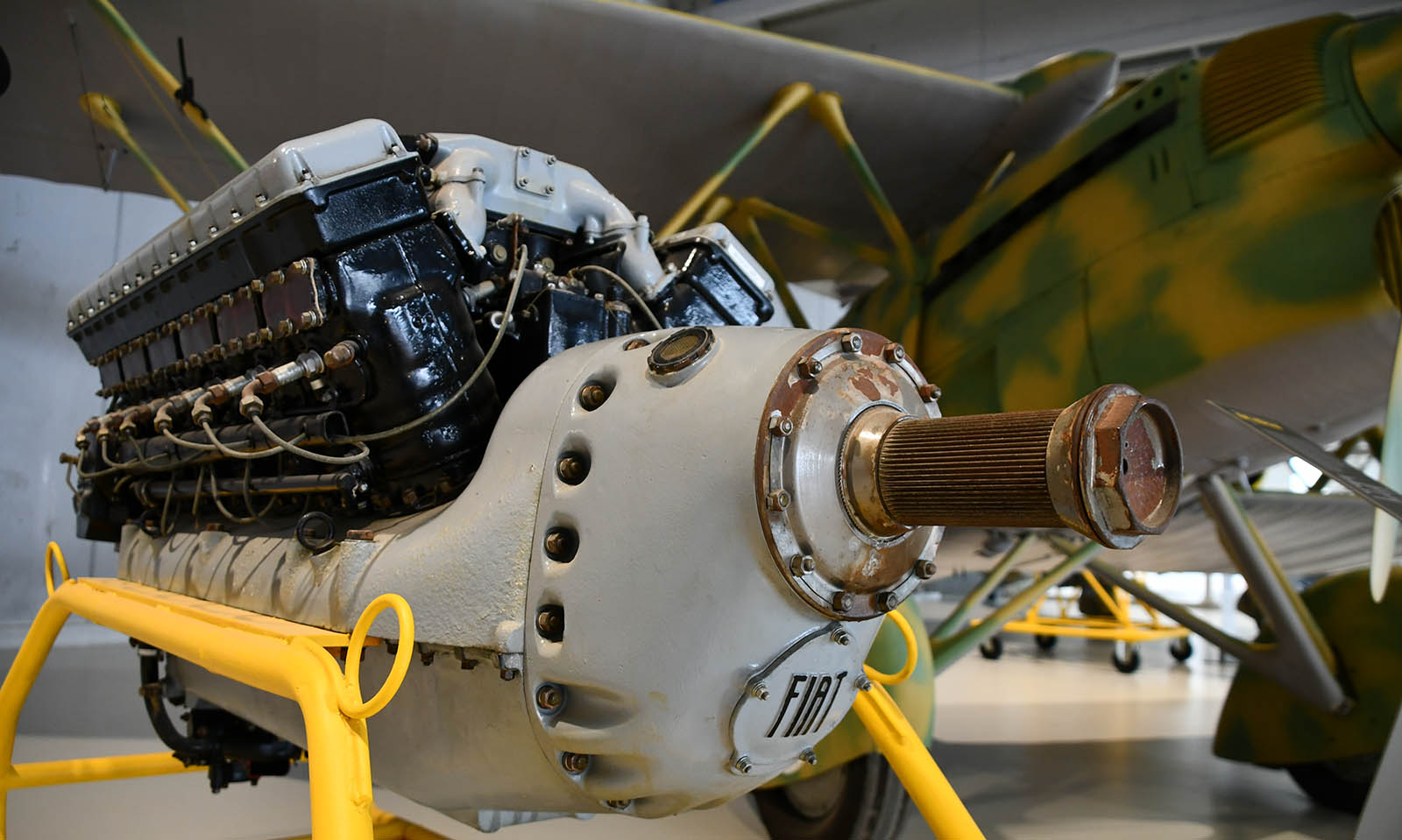Culture
The new Museum of Italian Air Force
The Italian Air Force History Museum, a place where the historical memory and technological heritage of aviation are kept, reopens to visitors in time for the Centenary.
May 2023
After 18 months of heavy renovation work, the Air Force History Museum in Vigna di Valle (Bracciano, on the outskirts of Rome) reopened its doors on May 4th. Since 1977, the museum has preserved the historical memory of the Italian Air Force, of aviation and of companies in the industry, whose people support the Air Force each and every day.
The museum’s new exhibit is divided into five hangars, covering 16,000 square meters on the shores of Lake Bracciano. It traces the main stages of aviation history, from the first biplanes to modern jet-powered aircraft. The journey goes back even further than the 100 years that the Italian Air Force is celebrating throughout 2023, starting from way back to Napoleon Bonaparte’s coronation.
Garnerin’s balloon, which ‘took off’ from Notre Dame on the evening of December 16th, 1804 and plunged into Lake Bracciano, is in fact on display at MUSAM (the museum’s new name). There is also a gift Pope Paul VI made to the Air Force - known as the Arma Azzurra - which is the oldest aviation artifact in the world.
The museum renovation was not just a physical one, with new exhibition spaces and modernized hangars to comply with the latest regulations, but also and above all one in terms of image with a new name and a new logo. The logo choice fell on one of the most iconic planes in the history of Italian flight, namely the SIAI S.55, known for its great feats in the 1930s.
As the Air Force Chief of Staff, General Luca Goretti explained that the reopening “is a reconnaissance that begins in our early days, passes through pioneering activities and reaches the present day with air defense activities and space exploration.” MUSAM is “yet another tool for us to demonstrate what our people have proudly accomplished during our first 100 years.” One of the museum’s key goals is to pass on this important legacy to younger generations.
“The Centenary presented a great opportunity, as a very symbolic and significant date, to revisit the Museum and give it a fresh look,” explained Lieutenant General Basilio Di Martino, coordinator of all Air Force Centenary activities. “The future, the present, and the past are interconnected. The museum allows us to interpret today and tomorrow through the lens of the past.”

The exhibition route winds through the various eras of aviation in chronological order, following an exciting narrative that allows visitors to embark on a journey from the origins of flight to the present day. More than 80 aircraft are displayed at MUSAM, including planes and helicopters that have made the history of the Air Force and aviation in general: the seaplanes that featured in flyovers and records, World War I and World War II fighters, the planes of the reconstruction and industrial ‘rebirth’ after World War II and the Cold War period, and even those still in service today.
In addition to the permanent exhibition, there is also memorabilia with high historical value such as major engines that have made aviation history. The exhibition hall dedicated to engines is where you can see and feel the deep connection between the Air Force and us at Avio Aero, which has always stood by the side of the "Arma Azzurra".
It was in this very space that Avio Aero - as an official partner of the Centenary and on the occasion of the inauguration ceremony of the new MUSAM held on May 3 - wanted to pay homage to the museum with a commemorative plaque intended to testify to “the passion and highest technological ingenuity that the women and men of Fiat Aviazione, as it was, and Avio Aero, as it is today, have dedicated to the Italian Air Force since 1908,” as the plaque reads.
This recognition was welcomed by Lieutenant Colonel Arturo Alfredo Caccetta, who thanked the people at Avio Aero. “Whether you build small components or large engines, all of you are part of this great project and your work is incredibly important. You will feel at home here at the museum, because every artifact is a reminder of your and our history.”






